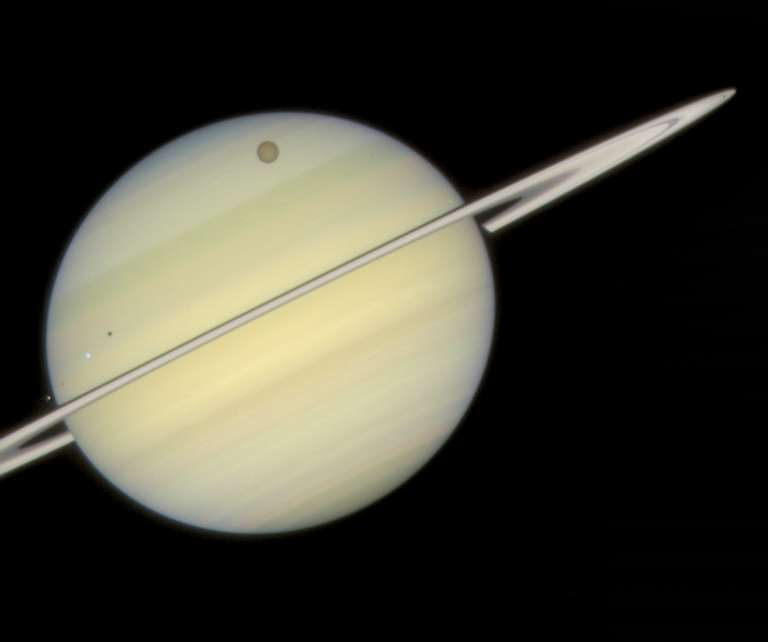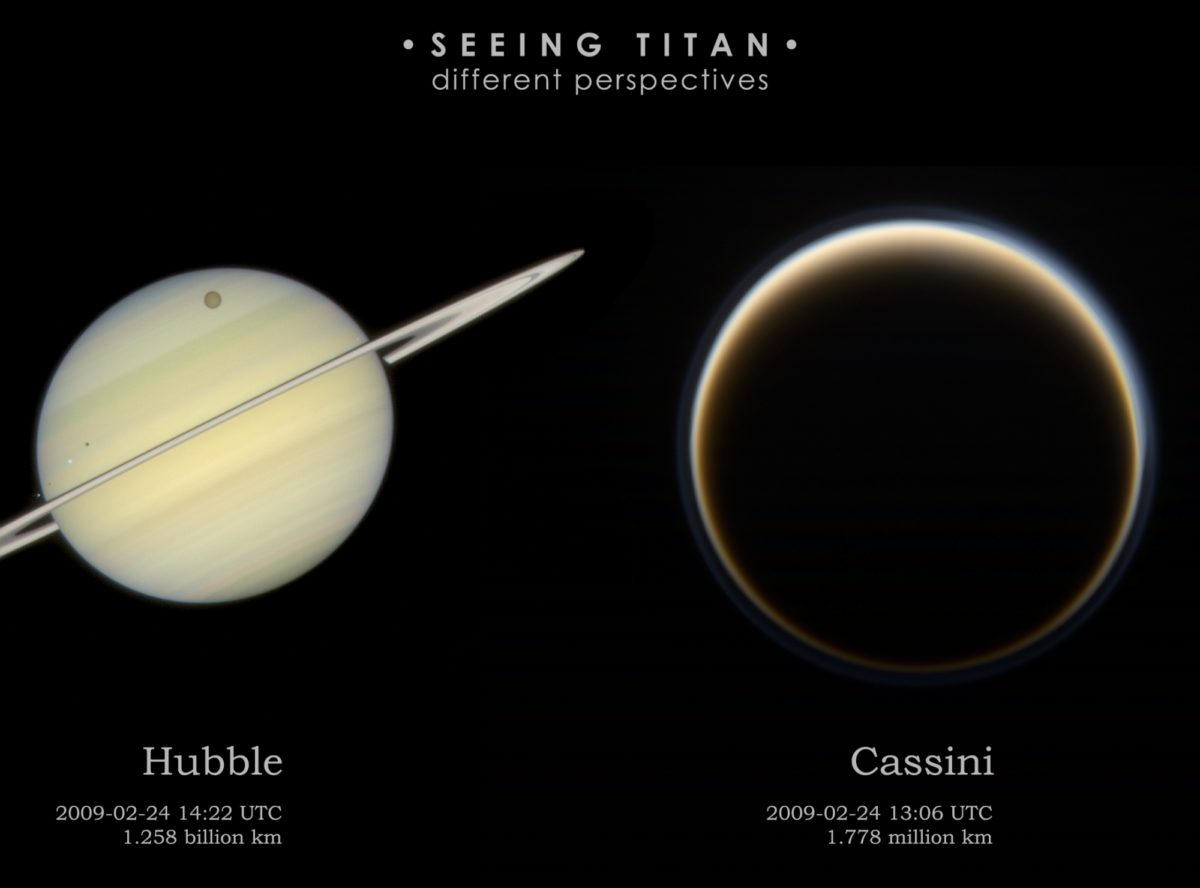Emily Lakdawalla • Aug 09, 2010
How to Recognize Titan from Quite a Long Way Away
You know, I could fill this blog almost entirely with the amazing images that Gordan Ugarkovic locates, processes into prettiness, and uploads to his Flickr account. Here's an awesome Hubble shot he found of Saturn, taken during the period last year when the geometry of Earth and Saturn lined up to permit us Earthlings to see (through telescopes of course) Saturn's moons passing across the face of the planet. Four moons are visible here: great big Titan, and then little white dots closer to the rings: Enceladus, Dione, and Mimas. Mimas is almost invisible at the right-hand edge of the disk, but you'll see it if you click to enlarge.

Four moons with one shot! Cool.
But wait, there's more. Because Gordan spends a lot of time working with these images, he recalled, while working through the latest release of Cassini data, that Hubble had been imaging at a similar time. Gordan compared the times of Hubble and Cassini shots and found that the two spacecraft photographed the giant moon nearly simultaneously. Hubble's photo above was taken at 14:22 UTC, while Cassini shot a view of Titan at 13:06 UTC. That's 76 minutes' difference. But at this time, it took 70 minutes for light to traverse the more than 1.2 billion kilometers separating Saturn and Earth. So Hubble saw a view of the planets in the alignment that they were at 13:12 UTC, according to Cassini's internal clock -- which is to say (in Gordan's words) "the light hitting Hubble's detector above got its start just six minutes after what Cassini saw."
But Cassini had a very different view on Titan from Hubble's. Here are the two spacecraft views, juxtaposed:

Hubble's view was from the direction of the Sun; Cassini was on the opposite side of Titan from the Sun, a position impossible to achieve for those of us stuck to Earth. Moreover, as Gordan wrote, "Cassini was at that moment 700 times closer to Titan than Hubble." The images display the different resolving powers of the two cameras, convolved with their different distances from their targets; both images are enlarged 1.5x from their original pixels.
We are all over the solar system, examining the planets, moons, and asteroids from every side!
(And for those of you who don't get the silly title of this post, go here.)
The Time is Now.
As a Planetary Defender, you’re part of our mission to decrease the risk of Earth being hit by an asteroid or comet.
Donate Today

 Explore Worlds
Explore Worlds Find Life
Find Life Defend Earth
Defend Earth

